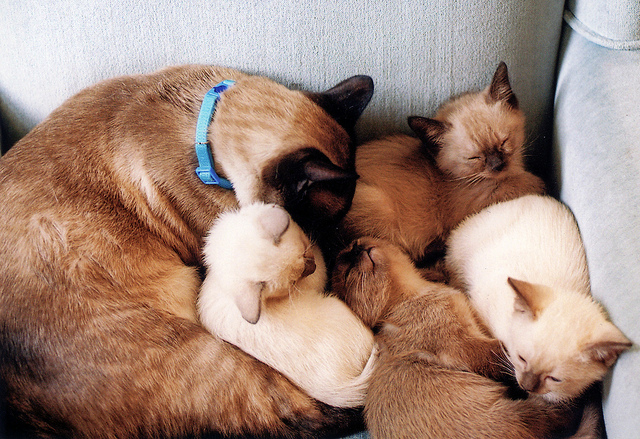For the past few months I've been enjoying Chuck Wendig's posts about writing, and they just keep getting better!
11 Ways To Become A Better Writer
1. Write.
Have you written today? If not, stop reading this and go write something. Seriously. Go.
Chuck Wendig writes:
"Stop talking about writing. Stop reading about writing. Stop dreaming about writing. Stop doing things that don’t qualify as writing. The thing that defines a writer is that the writer writes."
2. Do what works for you.
Writers talk a lot about what works for them, and that's great, but it's important to remember that just because something works (or doesn't work) for someone else doesn't mean it will (/won't) work for you.
The only way you'll know what works for you is to write. CW writes:
I don’t have answers. Neil Gaiman doesn’t have answers. Jane Austen didn’t have them. Nobody has answers. We have ideas. Suggestions. Possibilities. The only writer who has answers about your writing is you. Advice is just advice. ... You are your own Muse.That said, Neil Gaiman gave one of the best pieces of writing advice I've read, one that has helped me enormously. The following is from Neil Gaiman's Pep Talk for NaNoWriMo participants.
The last novel I wrote (it was ANANSI BOYS, in case you were wondering) when I got three-quarters of the way through I called my agent. I told her how stupid I felt writing something no-one would ever want to read, how thin the characters were, how pointless the plot. I strongly suggested that I was ready to abandon this book and write something else instead, or perhaps I could abandon the book and take up a new life as a landscape gardener, bank-robber, short-order cook or marine biologist. And instead of sympathising or agreeing with me, or blasting me forward with a wave of enthusiasm—or even arguing with me—she simply said, suspiciously cheerfully, “Oh, you’re at that part of the book, are you?”That's the key. Write one word after the other.
I was shocked. “You mean I’ve done this before?”
“You don’t remember?”
“Not really.”
“Oh yes,” she said. “You do this every time you write a novel. But so do all my other clients.”
I didn’t even get to feel unique in my despair.
So I put down the phone and drove down to the coffee house in which I was writing the book, filled my pen and carried on writing.
One word after another.
I know, it sounds absurd, like telling a person they need to breathe to stay alive, but the next time you're stuck, try to remember that even brilliant writers like Neil Gaiman get stuck too. All you need to do is write one word after another. Don't think about the whole novel, or about what you've written, just think about the next word. Write that word, then write another one, and so on.
3. Good grammar matters.
4. Your first stories will likely suck.
I know my first stories sucked. Nothing happened in them. I'd never heard of character arcs.
In my early stories I got hung up all the time, I'd wander off onto a storytelling ledge and wonder why I couldn't write the second half. Gah! I really wish there'd been more information in those days about how to create dramatic tension/narrative drive, or even moderately interesting characters.
Jim Butcher's advice on Tags and Traits was a revelation to me.
Also, though, it takes time. And practice. And I don't think the practice ever really stops. We continue to learn, to grow.
5. Ignore the naysayers
There's always, always, going to be someone--probably a lot of someones--who put you down, who tell you that you can't do it, who say that either you're not talented or that people aren't reading the kind of stories you're writing, or that no one is buying books anymore, or ... the list is endless.
Ignore them.
6. Learn to say "yes" more than you say "no"
This one is all Chuck Wendig. I have friends like this, people who not only say "Yes" but "Hell yes!" to just about anything they're asked, whether it is to do an interview, or to judge a contest, or comment on a novel.
And I think it's great advise.
But it's advice I haven't been able to take. I've had to say "no" a lot, no to reading and commenting on novels, no to doing reviews, no to being on panels. Why? Because I'm zealously guarding my writing time.
Don't misunderstand. I'm not anti-social. I would love to read every novel sent to me and give it a review, but I can't do that and maintain my writing schedule. And what do writers do? They write.
Writing comes first. Writing always comes first.
7. Don't make excuses.
Chuck Wendig writes: If you’re not writing, that’s your fault. It’s not anybody else’s.
It's a hard truth.
I want to stress, though, that of course life events will affect one's writing. Tragic events happen. My father died last year and that had a profound effect on me both as a person and a writer. I didn't write for at least two months after his death.
On the other hand, if a few weeks go by and you're always giving reasons for why you couldn't write, perhaps think about where writing is in terms of your priorities. There's nothing wrong with not writing. In fact, if writing is something you constantly want to avoid and is creating all sorts of stress, perhaps you need to put that dream aside for now and go on to other things.
8. Figure out what you love about stories.
Chuck Wendig writes:
Realize what you love about stories, and bring that love to bear on the page. Let the audience in on that love. Your love should be viral, like cat videos or the norovirus.Amen.
I think points 7 and 8 are related. If someone loves writing they'll come up with excuses to avoid doing other things to scavenge more time to write.
9. Quit chasing your voice.
Chuck Wendig writes:
You will never find your voice. It isn’t a car and you aren’t a dog chasing it. It’s not a pearl in an oyster or an elk in the forest. Your voice is who you are. The way you think. The way you speak when you’re not thinking about how you speak. You are your voice. If anything it’s like a lost key. It’ll turn up just when you stop hunting for it.Great advice! I think this--finding your voice--is one thing writing blog posts can help with.
10. Make the reader feel, make them think.
Chuck Wendig writes:
The best two things your story can do is to stir my emotions and to challenge my assumptions. Make me feel something (rage! lust! love! grief!). Make me think something (what is the nature of evil? what is the enemy of empathy? ...).
11. The Secret
CW writes:
The secret to writing is so simple it tickles: Write as much as you can. As fast as you can. Finish ... Hit your deadlines. Try very hard not to suck. That’s it. That’s my secret.That's it. That's every successful author's recipe for success: hard work and good luck.
Chuck Wendig's article deserves to be read from start to finish (contains adult language -->): 50 Rantypants Snidbits Of Random Writing & Storytelling Advice.
Do you have a tidbit of storytelling and writing wisdom? If so, please share!
Photo credit: "Lisboa #2" by Thomas Leuthard under Creative Commons Attribution 2.0.










